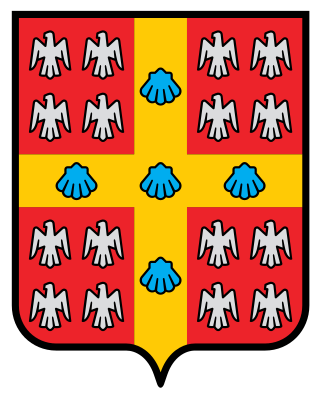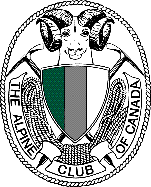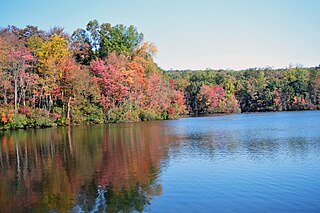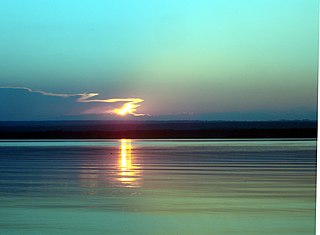Overview
The Canadian Ecology Centre site consists of a main building and several smaller cabins on a tract of land within Samuel de Champlain Provincial Park. The CEC is a non-profit organization and was initially supported by proponents within the logging and wood industries, such as Tembec, as well as by various levels of government, NGOs, and public donors. The CEC facilities, while contemporary in both age and design, are constructed almost entirely out of wood.
The CEC is primarily an educational and research centre, where courses ranging from local culture and history to biology and science to forestry management and mining are offered to the public. The site is also equipped with high-speed internet access, and can be rented out as a wedding venue, conference or meeting centre. Cabins can also be rented for a nightly rate as an alternative to "tenting it" in the park.
The centre, like much of the surrounding communities, is almost fully bilingual and offers most programs in English and French.
The CEC is also the headquarters for the Canadian Institute of Forestry.

Fundy National Park is a national park of Canada located on the Bay of Fundy, near the village of Alma, New Brunswick. It was created on April 10, 1946 and officially opened on July 29, 1950. The park showcases a rugged coastline which rises up to the Canadian Highlands, the highest tides in the world and more than 25 waterfalls. The park covers an area of 207 km2 (80 sq mi) along Goose Bay, the northwestern branch of the Bay of Fundy. When one looks across the Bay, one can see the northern Nova Scotia coast.
Trent University is a public liberal arts university in Peterborough, Ontario, with a satellite campus in Oshawa, which serves the Regional Municipality of Durham. Trent is known for its Oxbridge college system and small class sizes.

Algonquin Provincial Park is an Ontario provincial park located between Georgian Bay and the Ottawa River, mostly within the Unorganized South Part of Nipissing District. Established in 1893, it is the oldest provincial park in Canada. Additions since its creation have increased the park to its current size of about 7,653 km2 (2,955 sq mi). The park is contiguous with several smaller, administratively separate provincial parks that protect important rivers in the area, resulting in a larger total protected area.

Allegany State Park is a state park in western New York State, located in Cattaraugus County just north of the Allegheny National Forest in Pennsylvania. The park is divided into two sections: The Red House Area and the Quaker Run Area. It lies within the Allegheny Highlands forests ecoregion.

Université Laval is a public research university in Quebec City, Quebec, Canada. The university traces its roots to the Séminaire de Québec, founded by François de Montmorency-Laval in 1663, making it the oldest institution of higher education in Canada and the first North American institution to offer higher education in French. The university, which was founded in Old Québec, moved to a new campus in the 1950s in the suburban borough of Sainte-Foy–Sillery–Cap-Rouge. It is ranked among the top 10 Canadian universities in research funding and holds four Canada Excellence Research Chairs.

The Université de Moncton is a Canadian francophone university in New Brunswick. It includes campuses in Edmundston, Moncton, and Shippagan.

The Natural Resources is a government ministry of the Canadian province of Ontario that is responsible for Ontario's provincial parks, forests, fisheries, wildlife, mineral aggregates and the Crown lands and waters that make up 87 per cent of the province. Its offices are divided into Northwestern, Northeastern and Southern Ontario regions with the main headquarters in Peterborough, Ontario. The current minister is Graydon Smith].

Bon Echo Provincial Park is a provincial park in southeastern Ontario, Canada, approximately 6 kilometres (3.7 mi) north of Cloyne. The park is within township boundaries of both North Frontenac and Addington Highlands, roughly separated by Highway 41.

Cobequid Educational Centre (CEC) is a high school located in Truro, Nova Scotia, Canada.

Whiteshell Provincial Park is a provincial park in southeast Manitoba, approximately 120 kilometres (75 mi) east of the city of Winnipeg. The park is considered to be a Class II protected area under the IUCN protected area management categories. It is 275,210 hectares in size.

The Alpine Club of Canada (ACC) is an amateur athletic association with its national office in Canmore, Alberta that has been a focal point for Canadian mountaineering since its founding in 1906. The club was co-founded by Arthur Oliver Wheeler, who served as its first president, and Elizabeth Parker, a journalist for the Manitoba Free Press. Byron Harmon, whose 6500+ photographs of the Canadian Rockies in the early 20th century provide the best glimpse of the area at that time, was official photographer to the club at its founding. The club is the leading organization in Canada devoted to climbing, mountain culture, and issues related to alpine pursuits and ecology. It is also the Canadian regulatory organization for climbing competition, sanctioning local, regional and national events, and assembling, coaching and supporting the national team.

Samuel de Champlain Provincial Park is a provincial park in Ontario, Canada.

French Creek State Park is a 7,977-acre (3,228 ha) Pennsylvania state park in North Coventry and Warwick Townships in Chester County and Robeson and Union Townships in Berks County, Pennsylvania. It straddles northern Chester County and southern Berks County along French Creek. It is located in the Hopewell Big Woods. The park is the home of two lakes: Hopewell Lake, a 68-acre (28 ha) warm water lake, and Scotts Run Lake, a 22-acre (8.9 ha) cold water lake. The state record smallmouth bass was caught in Scotts Run Lake. There are extensive forests, and almost 40 miles (64 km) of hiking and equestrian trails. The park is also friendly to mountain bikers, having some renowned technical trails. Hopewell Furnace National Historic Site, which features a cold blast furnace restored to its 1830s appearance, is surrounded by the park. The Six Penny Day Use Area and Group Camp are listed on the National Register of Historic Places. French Creek State Park is located off of Pennsylvania Route 345 to the south of Birdsboro.

Bonne Bay Marine Station is a marine ecology research and teaching facility on Bonne Bay along Newfoundland's west coast. It offers services to students, researchers, educators and the general public. The station is within Gros Morne National Park, a recognized UNESCO World Heritage Site. The aquarium portion of the facility is open to visitors. Interactive aquariums tours are provided to walk-ins, as well as school and community groups. The tour offers exhibits the latest research while showcasing marine flora and fauna in the station's aquaria and touch tank. Officially opened on 6 Sept, 2002, the Bonne Bay Marine Station is operated by Memorial University of Newfoundland and the Gros Morne Co-operating Association. Funding was provided by Atlantic Canada Opportunities Agency (ACOA) and the Newfoundland and Labrador Provincial Government.

Meadow Lake Provincial Park is a northern boreal forest provincial recreational park along the Waterhen and Cold Rivers in the Canadian province of Saskatchewan. The park was founded on 10 March 1959, is the largest provincial park in Saskatchewan, and encompasses over 25 lakes in an area of 1,600 km2 (620 sq mi). The park was named "Meadow Lake" after the city of Meadow Lake and Meadow Lake. The city and the lake are not in the park and are located about 40 kilometres (25 mi) south-east of the nearest park entrance, which is about 5 kilometres (3.1 mi) north of Dorintosh. The length of the park stretches about 113 kilometres (70 mi) from Cold Lake on the Saskatchewan / Alberta border in the west to the eastern shore of Waterhen Lake in the east.

Northeast Forestry University is a public university in Harbin, Heilongjiang, China. It is affiliated with the Ministry of Education, and co-founded by the Minister of Education, the National Forestry and Grassland Administration, and the Heilongjiang Provincial People's Government. The university is part of Project 211 and the Double First-Class Construction.

The Pymatuning Laboratory of Ecology (PLE) is a year-round ecology field station of the University of Pittsburgh Department of Biological Sciences located in Linesville and South Shenango Township on the shores of Pymatuning Lake in Pennsylvania. The station contains research facilities and equipment, conducts undergraduate education and courses, and serves as center for conferences, symposia, and retreats. The Pyatuning Laboratory hosts researchers from the University of Pittsburgh as well as those from universities throughout the nation and world, which have included, among others, researchers form Duke University, the University of Virginia, the University of Georgia, the University of Miami. Likewise, course instructors at the lab come from the University of Pittsburgh, but also have included instructors from other institutions including Georgia Tech, the University of Connecticut, and the National Aviary. In addition, the University of Pittsburgh has instituted a collaborative program for study at the Pymatuning Lab with other area universities in which students that are enrolled through any of these institutions register, pay tuition, and receive credit at their home institutions. Schools participating in the collaborative program include Clarion University, Edinboro University, Indiana University of Pennsylvania, and Slippery Rock University.

Auburn Drive High School (ADHS) is a Canadian public high school located in the Sunset Acres neighbourhood of Westphal, Nova Scotia. It serves students from grades 10 to 12. Auburn's feeder schools include Astral Drive Junior High School and Graham Creighton Junior High School. Its elementary feeder schools are Astral Drive Elementary School, Colby Village Elementary School, Caldwell Road Elementary, Joseph Giles Elementary, Humber Park Elementary and Bell Park Academic Centre. In 2011, Auburn ranked fourth with a grade of B+ on the AIMS list.

Ponderosa State Park is a public recreation area and state park occupying a peninsula in Payette Lake on the northeast edge of McCall in Valley County, Idaho, United States. The park's 1,515 acres (613 ha) include a second unit, called North Beach, located six miles (9.7 km) north of McCall at the northern extremity of the lake. Ponderosa is a popular park for day use and camping. In 2020, the park recorded 392,417 day users and 78,081 campers making it the 5th most visited state park in Idaho that year. There is a motor vehicle entry fee of $7.00 per vehicle, per day for both Idaho residents and non-residents. Idaho residents can purchase an Idaho State Parks Passport for $10 per vehicle, per year which will give them unlimited access to Ponderosa State Park and any other state park for the year.
Greenwater Lake Provincial Park is a provincial park in the Canadian province of Saskatchewan. It is located on the eastern side of the province in the Porcupine Hills on Highway 38. The closest town, Porcupine Plain, is about 28 kilometres (17 mi) to the north-east of the park visitor centre. Founded on 19 February 1932, Greenwater is one of the oldest provincial parks in Saskatchewan. The original six parks were established in 1931 and Greenwater Provincial Park was added one year later. In 1964, the park was expanded to its current size.

















